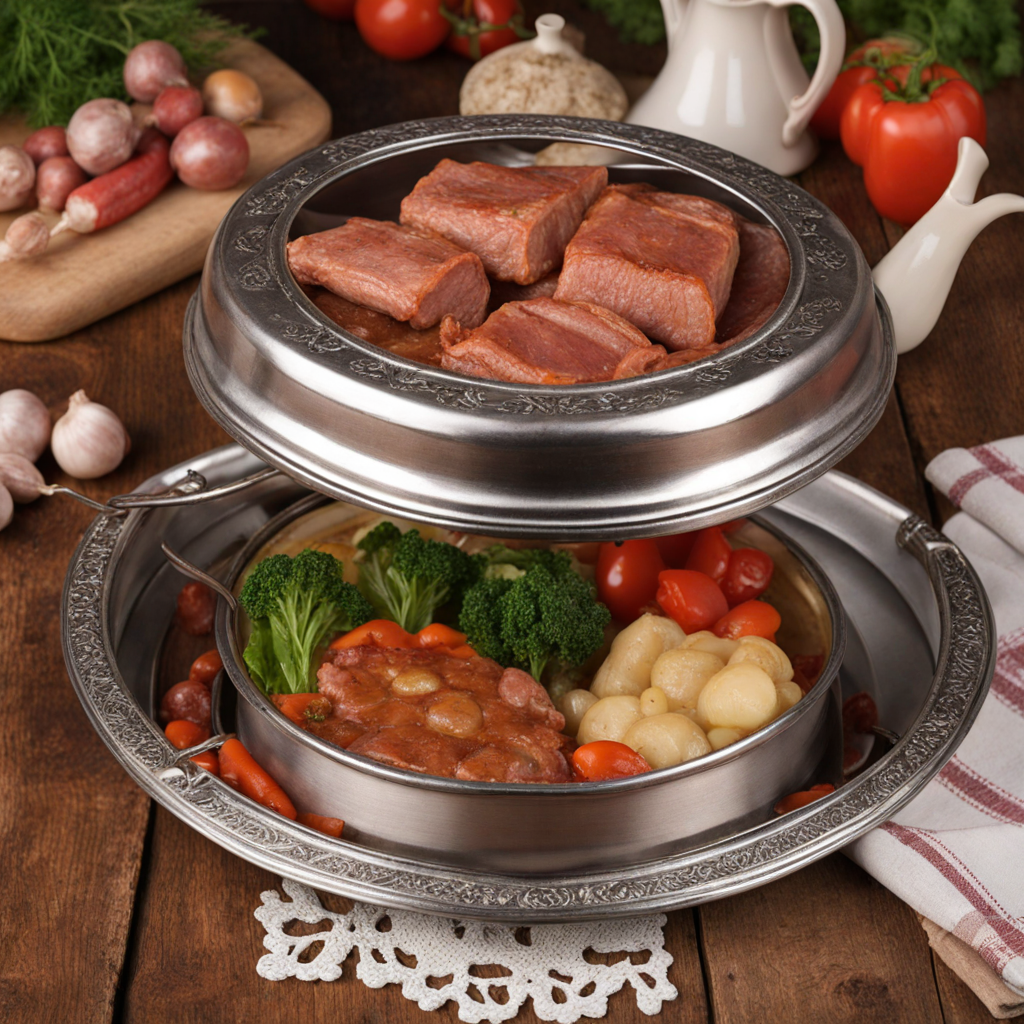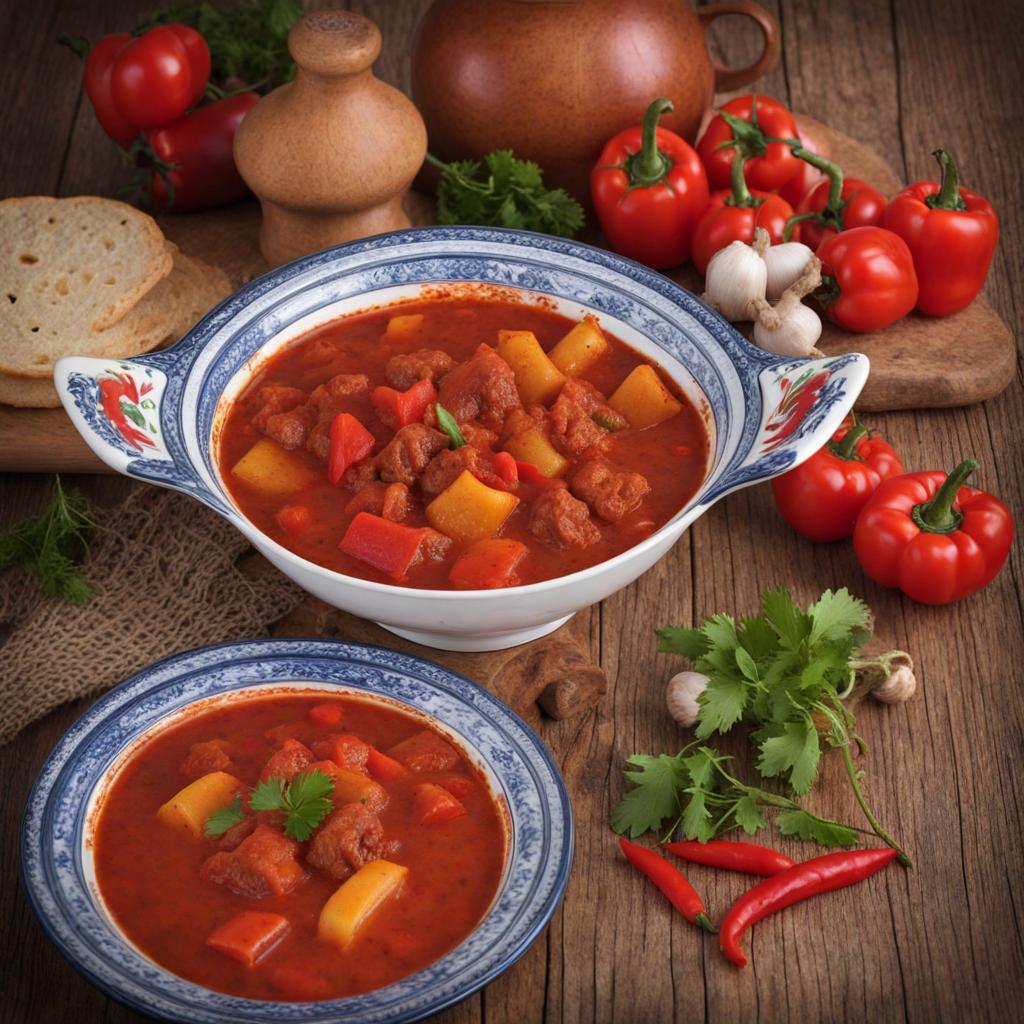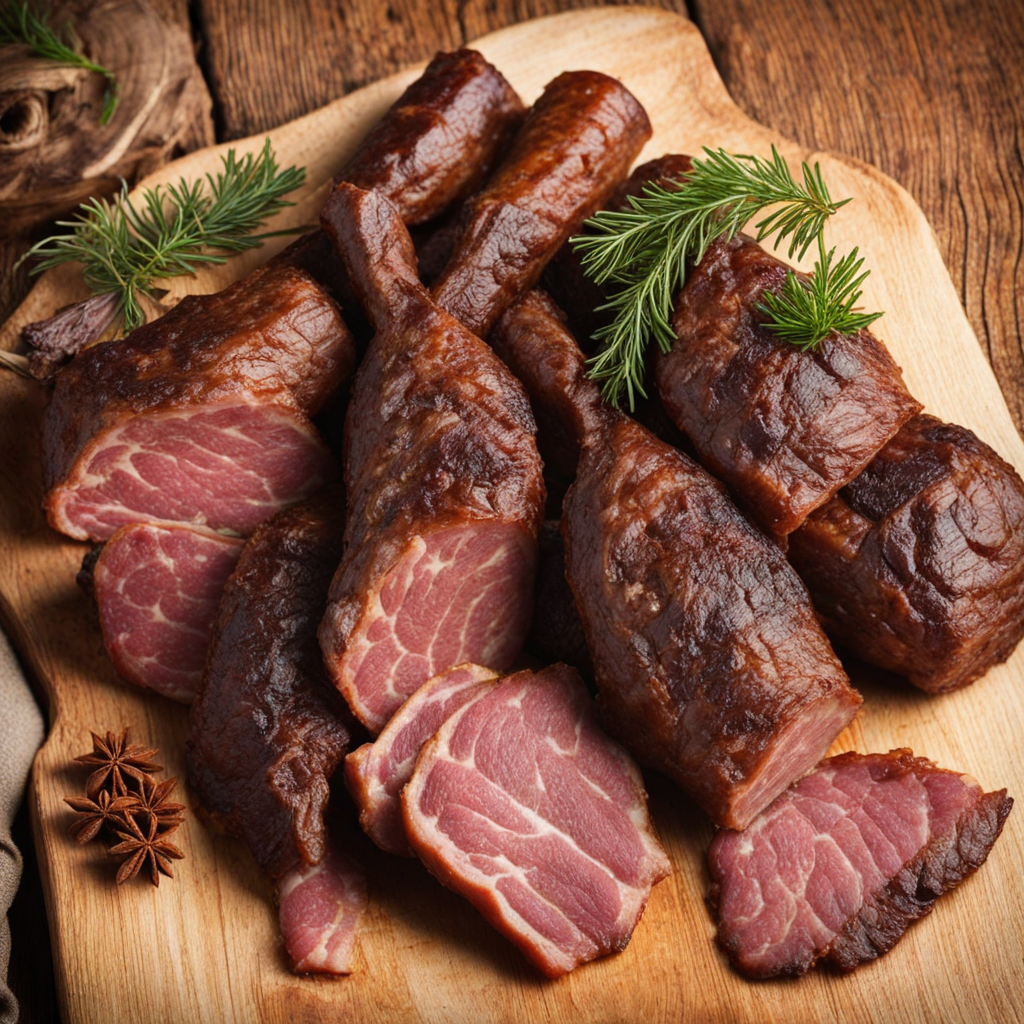Meso u Saču
Meso u Saču is a traditional Serbian dish that showcases the rustic charm and hearty flavors of Balkan cuisine. This delightful meal typically consists of marinated meats, often a mixture of pork, beef, and occasionally lamb, which are slow-cooked in a special pot called a 'sač.' The sač is a dome-shaped lid made of metal or clay that sits over the meat, creating an oven-like environment. This method allows the meat to become incredibly tender while absorbing the aromatic flavors of herbs and spices like garlic, rosemary, and bay leaves, which are often used in the marination process. The cooking process involves placing the marinated meat in the sač along with an assortment of seasonal vegetables such as potatoes, carrots, and onions. The dish is then covered with the lid and placed over hot coals, allowing it to cook slowly for several hours. This method not only infuses the meat with a rich, smoky flavor but also ensures that all the juices are retained, resulting in a succulent and flavorful dish that is perfect for sharing with family and friends. The combination of tender meat and roasted vegetables creates a comforting and satisfying meal that reflects the warmth of Serbian hospitality. Meso u Saču is often served with freshly baked bread or a side of traditional Serbian salads, making it a feast that embodies the essence of communal dining. Each bite offers a taste of history and tradition, encapsulating the heart of Serbian culinary culture. As you savor this dish, you will experience the harmony of flavors that come together through the slow cooking process, inviting you to indulge in the rich, hearty fare that defines Serbia's gastronomic landscape.
How It Became This Dish
Месо у сачу: A Culinary Tradition of Serbia Origins of Месо у сачу The dish known as Месо у сачу, which translates to "meat in a baking pan," is a traditional Serbian meal that embodies the rich culinary heritage of the Balkans. Its origins can be traced back to ancient cooking techniques, where the use of clay pots and earthenware was prevalent. The word "сач" refers to a domed baking lid, typically made of metal or clay, which is placed over the food being cooked. This method dates back centuries, with influences from both Mediterranean and Eastern European cuisines, showcasing the cross-cultural exchanges that have shaped Serbian gastronomy. The earliest records of sач cooking in the Balkan region can be linked to the Ottoman Empire's influence, which introduced various cooking techniques and flavors. However, the technique itself may have predated Ottoman rule, as similar cooking methods were used by ancient civilizations around the Mediterranean. The concept of slow-cooking meat under a lid allows for flavors to meld together beautifully, resulting in tender, succulent dishes that are rich in taste. Cultural Significance In Serbia, Месо у сачу is more than just a meal; it represents a connection to the land, tradition, and family. It is often prepared during special occasions and gatherings, such as weddings, holidays, and family reunions. The preparation of this dish is a communal activity, fostering a sense of togetherness. Families often gather to help with the preparation, which involves marinating the meat, chopping vegetables, and stoking the fire for the cooking process. The dish typically features a variety of meats, including pork, lamb, or beef, seasoned with local herbs and spices. The addition of seasonal vegetables, such as potatoes, carrots, and onions, enhances the flavor profile and reflects the agricultural bounty of the region. The use of fresh ingredients not only showcases the importance of local produce in Serbian cuisine but also emphasizes the connection between food and the changing seasons. Traditionally, Месо у сачу is cooked outdoors, often over an open flame or in a wood-fired oven. This method adds a distinct smoky flavor that is highly prized. The dish is usually accompanied by homemade bread, which is often baked in the same oven, creating a comforting and hearty meal that is deeply satisfying. Development Over Time As Serbia underwent various political and cultural transformations through the centuries, so too did its culinary practices. The fall of the Ottoman Empire and the subsequent rise of the Austro-Hungarian influence introduced new ingredients and techniques that enriched Serbian cuisine. Despite these changes, Месо у сачу has remained a staple, adapting to modern tastes while retaining its traditional roots. In the 20th century, the industrialization of food production and urbanization began to change the way people cooked and ate. With more families living in cities and less land available for personal gardens, many traditional dishes began to fade. However, Месо у сачу managed to hold its ground as a beloved dish, often prepared on weekends or during holidays when families reunited. The rise of the "foodie" culture in the late 20th and early 21st centuries has also contributed to a renewed interest in traditional dishes like Месо у сачу. Chefs and home cooks alike have sought to revive and modernize this classic dish, experimenting with different meats, marinades, and cooking methods. Some have even taken the dish beyond its traditional boundaries, incorporating international flavors and techniques while still respecting its cultural significance. Modern Interpretations Today, Месо у сачу can be found in various forms across Serbia and its neighboring regions. While the classic preparation remains popular, innovative chefs have begun to put their own spin on the dish. For instance, some restaurants now serve Месо у сачу using exotic meats or incorporating international spices, showcasing the versatility of the dish. Moreover, the rise of culinary tourism has brought increased attention to traditional Serbian cuisine. Visitors to Serbia often seek out authentic experiences, including the opportunity to enjoy a home-cooked meal of Месо у сачу. This has led to the establishment of culinary workshops and classes where tourists can learn to prepare the dish themselves, deepening their understanding of the cultural significance behind it. Conclusion Месо у сачу stands as a testament to Serbia's rich culinary heritage, encapsulating the essence of home-cooked meals, communal gatherings, and the celebration of local produce. Its origins root it firmly in the historical context of the region, while its ongoing evolution allows it to remain relevant in the modern culinary landscape. As Serbia continues to embrace globalization, the importance of preserving traditional dishes like Месо у сачу cannot be overstated. It serves as a reminder of the country’s past, a celebration of its present, and a promise for its future. Whether enjoyed at a grand family feast or a cozy gathering with friends, this dish continues to bring people together, transcending generations and preserving the stories that flavor the heart of Serbian culture.
You may like
Discover local flavors from Serbia







